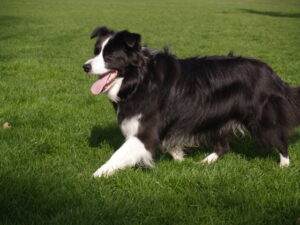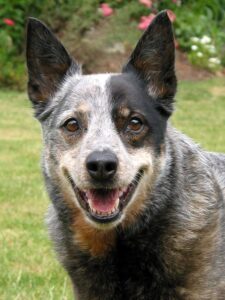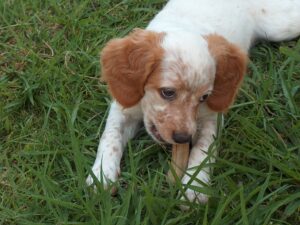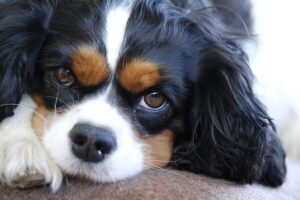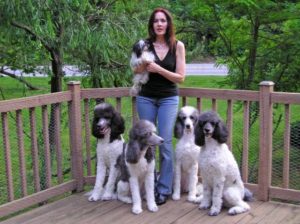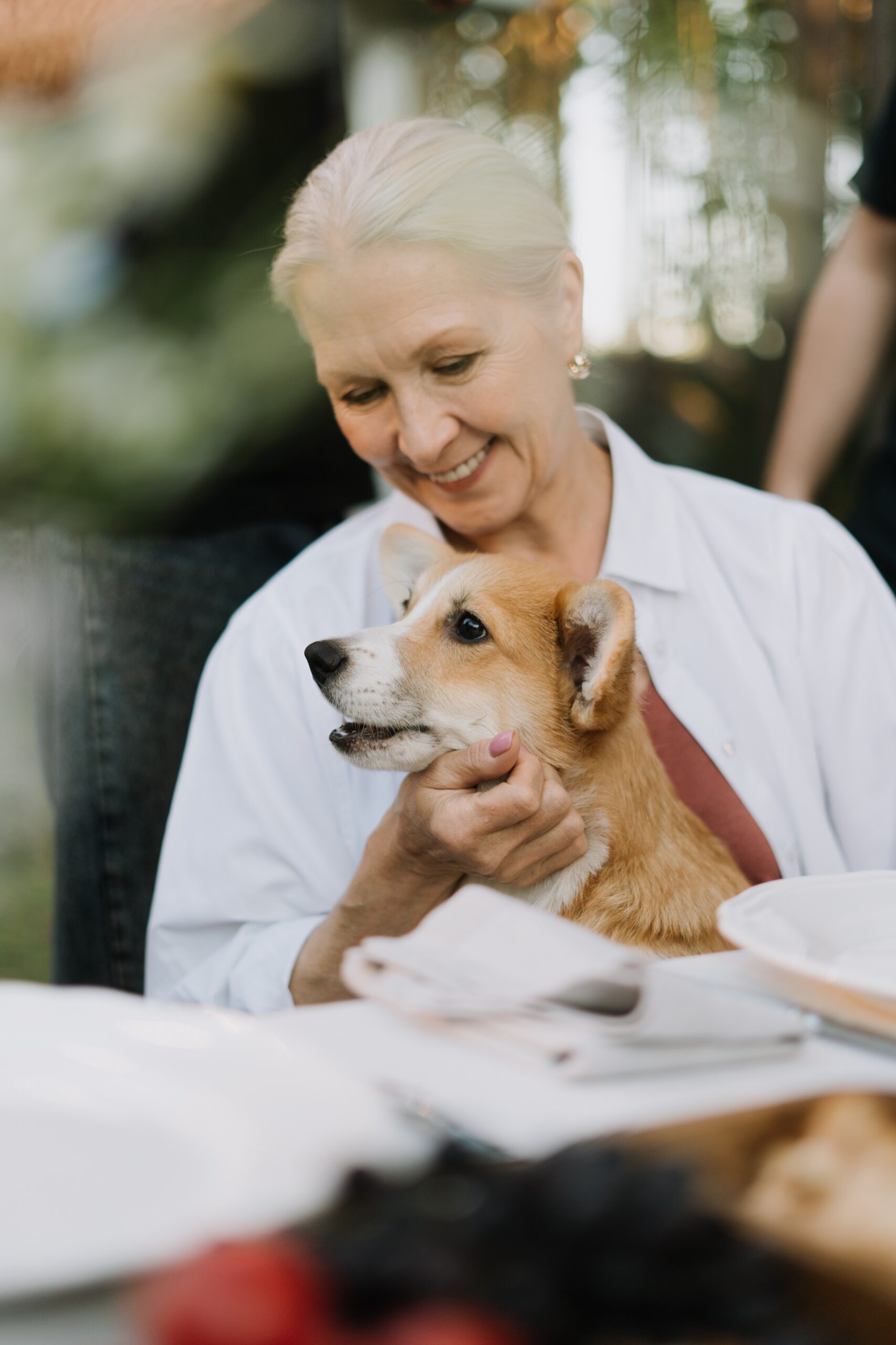WORKING DOGS
Working dog breeds worked their way into my heart, as some of my favorites dogs to be in the company of. On my watch, they have proven what wonderful companions and family dogs they really are. Usually large or giant breeds, the working-class dogs are also naturals for protection. They’re intelligent, alert, love training, which I highly recommend, and are happier and better adjusted to family life when they have a job to do. Large size, strength, temperament, instincts, and need to “work” put some of them at the top of the list for guarding property, pulling sleds, and assisting in search and rescue. However, pet parents need to know how to properly train and socialize a large or giant breed dog, and I would be hesitant to recommend any large breed or working-class dog to a first-time pet parent unless they intend to secure professional training.
POPULAR WORKING BREEDS
Boxer
Average Height: 23-25 inches (male), 21.5-23.5 inches (female) Average Weight: 65-80 pounds (male), 50-65 pounds (female) Life Expectancy: 10-12 years
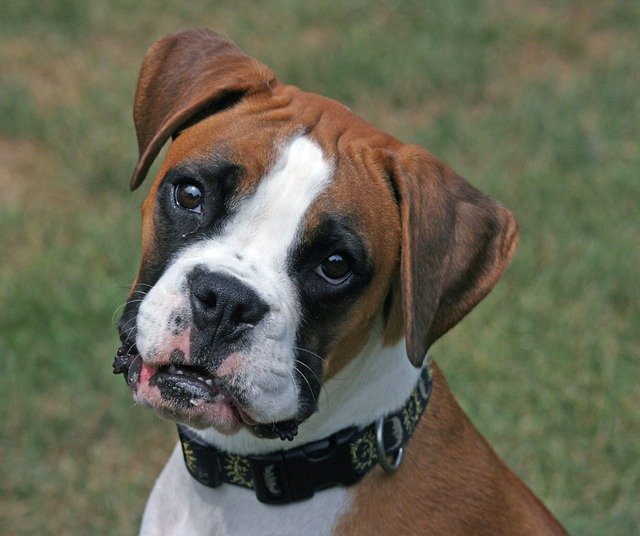
Boxers have been one of America’s most popular dog breeds for a very long time. They have an athletic and muscular built, yet they are graceful and sprightly. The coat can be fawn or brindle, with white markings or all white. Boxers are great with children and make loving family dogs as well as courageous protectors.
Their strength and exuberant behavior, especially jumping on people, needs to be modified into acceptable behavior at an early age or the Boxer will be hard to handle. Professional training that includes extensive social skills, is recommended.
Bernese Mountain Dog
Average Height: 25-27.5 inches (male), 23.-26 inches (female) Average Weight: 80-115 pounds (male), 70-95 pounds (female)
Life Expectancy: 7-10 years
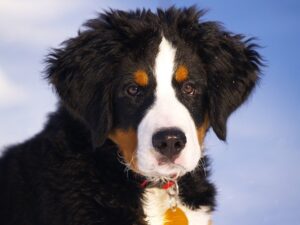 Born to please, the Bernese Mountain Dog is famously recognizable, remarkably beautiful, and genuinely affectionate. His cold-weather, tri-colored, silky thick coat and distinct markings on his face and body make him outstanding. This intelligent and brawny breed filled many jobs on the farmlands in Switzerland. A little reserved with strangers, the Bernese Mountain Dog is a gentle, loving family dog and especially good with children. He is truly one of my favorites! He can be an excellent student with the right training.
Born to please, the Bernese Mountain Dog is famously recognizable, remarkably beautiful, and genuinely affectionate. His cold-weather, tri-colored, silky thick coat and distinct markings on his face and body make him outstanding. This intelligent and brawny breed filled many jobs on the farmlands in Switzerland. A little reserved with strangers, the Bernese Mountain Dog is a gentle, loving family dog and especially good with children. He is truly one of my favorites! He can be an excellent student with the right training.
Saint Bernard
Average Height: 28-30 inches (males), 26-28 inches (female) Average Weight: 140-180 pounds (male), 120-140 pounds (female)
Life Expectancy: 8-10 years
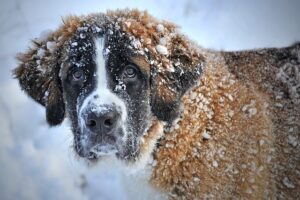 Saint Bernards though not a very popular breed are among the world’s most famous and beloved breeds and a most welcome sight to stranded Alpine travelers. Saint Bernards are every bit as good-natured and intelligent as they are outstandingly muscled and massive. Good with family and children, this very large 120+ lb. working-dog breed requires obedience training and socialization at an early age.
Saint Bernards though not a very popular breed are among the world’s most famous and beloved breeds and a most welcome sight to stranded Alpine travelers. Saint Bernards are every bit as good-natured and intelligent as they are outstandingly muscled and massive. Good with family and children, this very large 120+ lb. working-dog breed requires obedience training and socialization at an early age.
Samoyed
Average Height: 21-23.5 inches (male), 19-21 inches (female) Average Weight: 45-65 pounds (male), 35-50 pounds (female)
Life Expectancy: 12-14 years
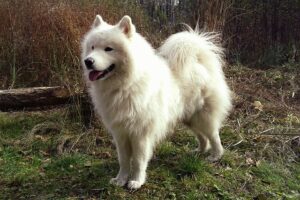 This high energy, hardworking, untiring dog requires love, attention, and training or he may become more mischievous than appreciated. The Samoyed’s stunning white coat can protect him in Siberian temperature as low as minus 60 degrees where he is bred to be a sled dog. This non-stop intelligent and social pack dog will not do well being left alone all day and will tend to get himself into trouble. Training should start early, and the pet parent needs to establish loving but firm control.
This high energy, hardworking, untiring dog requires love, attention, and training or he may become more mischievous than appreciated. The Samoyed’s stunning white coat can protect him in Siberian temperature as low as minus 60 degrees where he is bred to be a sled dog. This non-stop intelligent and social pack dog will not do well being left alone all day and will tend to get himself into trouble. Training should start early, and the pet parent needs to establish loving but firm control.
Siberian Husky
Average Height: 21-23.5 inches (male), 20-22 inches (female) Average Weight: 45-60 pounds (male), 35-50 pounds (female)
Life Expectancy: 12-14 years
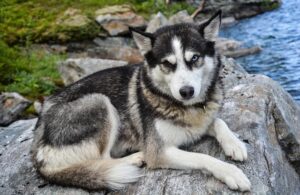 A medium-size, thick-coated dog, the Siberian Husky exhibits great endurance, working in a pack as a sled dog, able to pull light loads through the vast frozen wilderness. Known for their beautiful blue eyes, sometimes brown or sometimes one of each, the Siberian Husky is much smaller and lighter weight dog than its cousin, the Alaskan Malamute. Natural pack animals, Siberians enjoy family life, kids, and other dogs. Their friendly temperament does not lend itself to be a protective watchdog. Unlike most canines, this breed is known for cleanliness and has little or no odor!
A medium-size, thick-coated dog, the Siberian Husky exhibits great endurance, working in a pack as a sled dog, able to pull light loads through the vast frozen wilderness. Known for their beautiful blue eyes, sometimes brown or sometimes one of each, the Siberian Husky is much smaller and lighter weight dog than its cousin, the Alaskan Malamute. Natural pack animals, Siberians enjoy family life, kids, and other dogs. Their friendly temperament does not lend itself to be a protective watchdog. Unlike most canines, this breed is known for cleanliness and has little or no odor!
Alaskan Malamute
Average Height: 25 inches (male), 23 inches (female) Average Weight: 85 pounds (male), 75 pounds (female)
Life Expectancy: 10-14 years
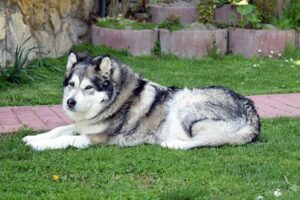 Much larger than the Siberian Husky, the Alaskan Malamute is a heavy-boned, powerful arctic dog with dense, weatherproof fur. Their high intelligence, eagerness to learn and please, and affectionate, gentle pack member nature, make the Alaskan Malamute a wonderful family dog, especially with children. Once again though, formal professional training should begin when the puppy is young. The pet parent must establish who is the leader of the pack as only one of you can be in control.
Much larger than the Siberian Husky, the Alaskan Malamute is a heavy-boned, powerful arctic dog with dense, weatherproof fur. Their high intelligence, eagerness to learn and please, and affectionate, gentle pack member nature, make the Alaskan Malamute a wonderful family dog, especially with children. Once again though, formal professional training should begin when the puppy is young. The pet parent must establish who is the leader of the pack as only one of you can be in control.
Rottweiler
Average Height: 24-27 inches (male), 22-25 inches (female) Average Weight: 95-135 pounds (male), 80-100 pounds (female)
Life Expectancy: 9-10 years
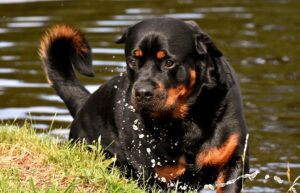 The Rottweiler is a breed of great strength recognized to be gentle and protective of his human family. Though heavily muscled and black shiny coat with distinct, rust-colored, facial marking completes the Rottweilers intimidating appearance to outsiders, the Rottie is a playful, loving, and huggable companion. Often, however, his reputation for aggression is not unfounded. His territorial and guardian like nature calls for early training and extensive socialization.
The Rottweiler is a breed of great strength recognized to be gentle and protective of his human family. Though heavily muscled and black shiny coat with distinct, rust-colored, facial marking completes the Rottweilers intimidating appearance to outsiders, the Rottie is a playful, loving, and huggable companion. Often, however, his reputation for aggression is not unfounded. His territorial and guardian like nature calls for early training and extensive socialization.
Great Dane
Average Height: 30-32 inches (male), 28-30 inches (female) Average Weight: 140-175 pounds (male), 110-140 pounds (female)
Life Expectancy: 7-10 years
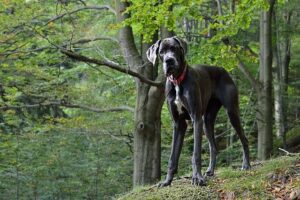 The magnificent Great Dane will stand out in any crowd. This over-sized puppy at heart is loving, loyal, and usually friendly to all. He makes a wonderful companion, gentle and kind-spirited, even-tempered, and tolerant of children. Watching a Dane trot around the backyard is a pet parent’s delight. When the Great Dane rears-up he is taller than most humans and can easily place his front paws on their shoulders. Regardless of the Great Dane’s delightfully lovable personality, his towering size and considerable weight are enough to deter any intruder. They are most famous for their black and white coat known as “harlequin” but are also seen in shades of gray, black, blue, fawn, and brindle. This is not a dog I would recommend to a first-time pet parent. Great Danes are a huge undertaking and responsibility. A professional trainer is a must.
The magnificent Great Dane will stand out in any crowd. This over-sized puppy at heart is loving, loyal, and usually friendly to all. He makes a wonderful companion, gentle and kind-spirited, even-tempered, and tolerant of children. Watching a Dane trot around the backyard is a pet parent’s delight. When the Great Dane rears-up he is taller than most humans and can easily place his front paws on their shoulders. Regardless of the Great Dane’s delightfully lovable personality, his towering size and considerable weight are enough to deter any intruder. They are most famous for their black and white coat known as “harlequin” but are also seen in shades of gray, black, blue, fawn, and brindle. This is not a dog I would recommend to a first-time pet parent. Great Danes are a huge undertaking and responsibility. A professional trainer is a must.
Great Pyrenees
Average Height: 27-32 inches (male), 25-29 inches (female) Average Weight: 100 plus pounds (male), 85 plus pounds (female)
Life Expectancy: 10-12 years
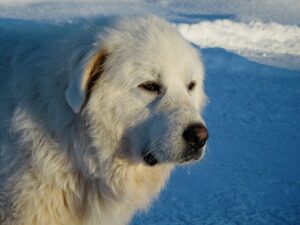 Great Pyrenees dogs are extraordinarily powerful and very large working dogs bred to protect sheep by scaring off wolves, bears, and other predators in snowy mountain ranges. Most commonly seen with a lush white coat, they can also have gray, tan or rust color markings. Though they are mellow family dogs and wonderful chaperones for children they are also great guardians of the house and home. As with all large breeds, professional training should be strongly considered.
Great Pyrenees dogs are extraordinarily powerful and very large working dogs bred to protect sheep by scaring off wolves, bears, and other predators in snowy mountain ranges. Most commonly seen with a lush white coat, they can also have gray, tan or rust color markings. Though they are mellow family dogs and wonderful chaperones for children they are also great guardians of the house and home. As with all large breeds, professional training should be strongly considered.
Mastiff
Average Height: 30 inches & up (male), 27.5 inches & up (female) Average Weight: 160-230 pounds (male), 120-170 pounds (female)
Life Expectancy: 6-10 years
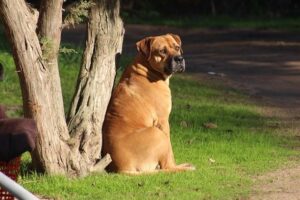 Mastiffs are densely muscled, heavy-boned, and considered to be a giant breed dog of courage and great strength. His short double thick coat is fawn, apricot, or brindle. This gentle mammoth of a dog is as docile as he is fearless. His immense size and black-masked face can be intimidating. As well, the Mastiff is a family guardian who can be distrustful of outsiders. Private, professional in-home training using affectionate and gentle yet authoritative methods and extensive socialization is highly recommended for this giant breed.
Mastiffs are densely muscled, heavy-boned, and considered to be a giant breed dog of courage and great strength. His short double thick coat is fawn, apricot, or brindle. This gentle mammoth of a dog is as docile as he is fearless. His immense size and black-masked face can be intimidating. As well, the Mastiff is a family guardian who can be distrustful of outsiders. Private, professional in-home training using affectionate and gentle yet authoritative methods and extensive socialization is highly recommended for this giant breed.
Newfoundland
Average Height: 28 inches (male), 26 inches (female) Average Weight: 130-150 pounds (male), 100-120 pounds (female)
Life Expectancy: 9-10 years
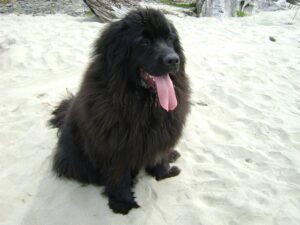 The impressively large Newfoundland is a sweet-tempered family dog known for his unwavering patients and attentiveness toward children. His flat and coarse coat is most recognizable in black but also seen in gray and brown and black-and-white and require routine brushing and grooming. Their trusting nature allows for gentle but authoritative training and is best done at an early age. As always, socialization is highly recommended. The Newfoundland is a favorite of mine and I have seen positive results with training as early as 8 weeks.
The impressively large Newfoundland is a sweet-tempered family dog known for his unwavering patients and attentiveness toward children. His flat and coarse coat is most recognizable in black but also seen in gray and brown and black-and-white and require routine brushing and grooming. Their trusting nature allows for gentle but authoritative training and is best done at an early age. As always, socialization is highly recommended. The Newfoundland is a favorite of mine and I have seen positive results with training as early as 8 weeks.

